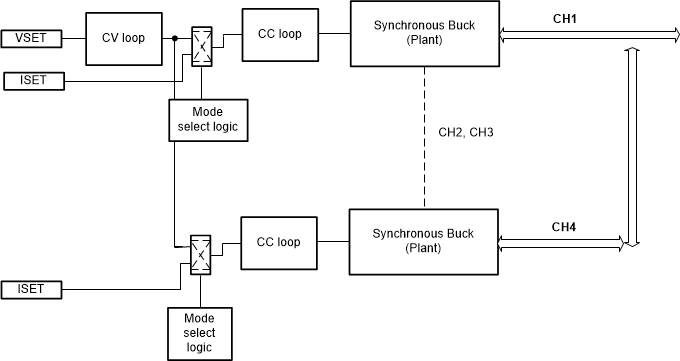TIDUEY0 November 2020
- Description
- Resources
- Features
- Applications
- 5
- 1System Description
- 2System Overview
- 3Hardware, Software, Testing Requirements, and Test Results
- 4Design and Documentation Support
- 5About the Author
2.2.3 Multiphase Configuration
Since the feedback controller is in software, it gives the flexibility to operate multiple channels in parallel without any hardware changes. The design is configured in multiphase mode with a simple software change shown in Figure 2-3. In multiphase configuration, each phase uses separate CC loops and are connected in parallel. A single constant-voltage loop is nested to all constant current loops, which ensures current balancing in CV mode.
 Figure 2-3 Multiphase Software Configuration.
Figure 2-3 Multiphase Software Configuration.